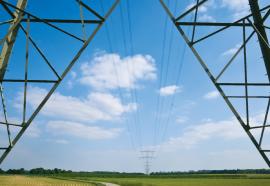Managing Overgrowth
Submitted by meacott on Thu, 2011-06-16 18:03Tree limbs and power lines don’t mix. That was the final verdict after overgrown trees caused blackouts immobilizing major swaths of the East Coast in 2003. (See Federal Energy Regulatory Commission (FERC), “Utility Vegetation Management (UVM): Final Report,” March 2004.)









